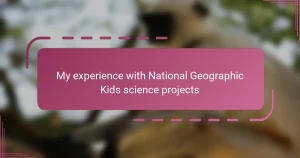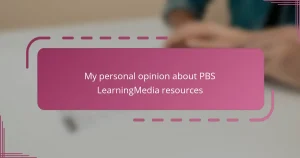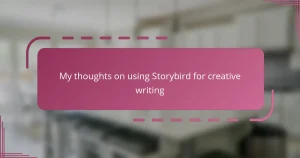Key takeaways
- Nasa provides a wealth of free educational resources organized by age group and subject, facilitating access for parents and children.
- The hands-on activities and challenges encourage critical thinking, creativity, and a genuine sense of discovery in kids.
- Engaging with space topics fosters curiosity and allows parents to create memorable learning experiences through interactive and playful methods.
- NASA’s user-friendly materials make it easy to integrate quality STEM education into everyday life without complex processes or costs.

Understanding NASA’s Educational Resources
When I first stumbled upon NASA’s educational resources, I was amazed by the sheer variety and depth they offer, from interactive games to detailed lesson plans. It made me wonder—how often do we underestimate such free, high-quality tools right at our fingertips? Exploring these materials felt like opening a treasure chest of knowledge that’s both exciting and approachable for kids.
What really struck me is how NASA organizes its resources by age group and subject, which makes it so much easier for a busy parent to find exactly what fits their child’s interests and learning level. Have you ever tried navigating educational websites only to feel overwhelmed? NASA’s clear structure helped me avoid that and dive right into meaningful activities that sparked curiosity.
I also noticed how many of these resources encourage hands-on learning and critical thinking, not just passive reading. This approach made me reflect on how much more engaged my kids were when they could actively participate rather than just listen. Don’t you want your children to experience the same excitement of discovery that I did through these incredible NASA tools?
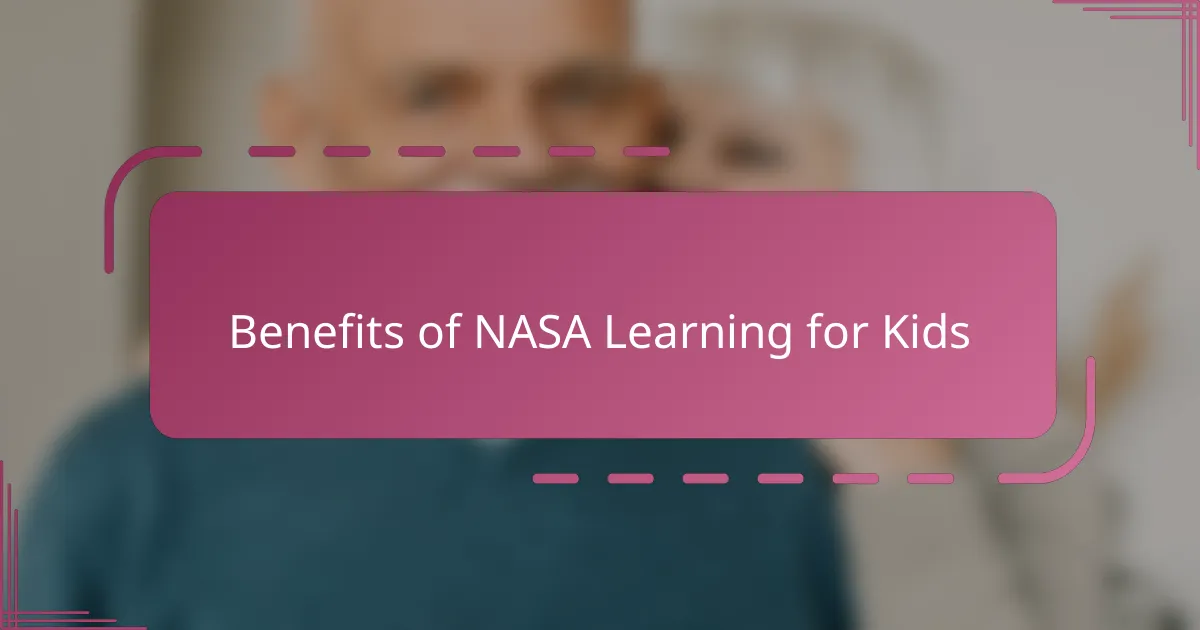
Benefits of NASA Learning for Kids
What I’ve seen time and again is that NASA’s learning resources ignite a sense of wonder in kids, turning complex science into something tangible and fun. When my child built a simple model rocket using their guides, I noticed not just excitement but genuine pride—it was more than play, it was discovery. Doesn’t every parent hope for a spark that makes learning feel like an adventure rather than a chore?
Beyond the thrill of space and planets, these resources help kids develop critical thinking and problem-solving skills that last a lifetime. I’ve observed how tackling NASA’s challenges encourages patience and creativity, qualities I value deeply. Have you ever witnessed your child’s face light up when they finally figure something out on their own? That moment is priceless.
Lastly, I appreciate how NASA’s content fosters curiosity about the world and beyond, inspiring kids to dream big. It made me think about how early exposure to such ambitious topics can shape a child’s confidence and aspirations. When my kids talk about becoming astronauts or scientists, I know these resources are planting seeds for their future. Isn’t that one of the greatest gifts we can give as parents?
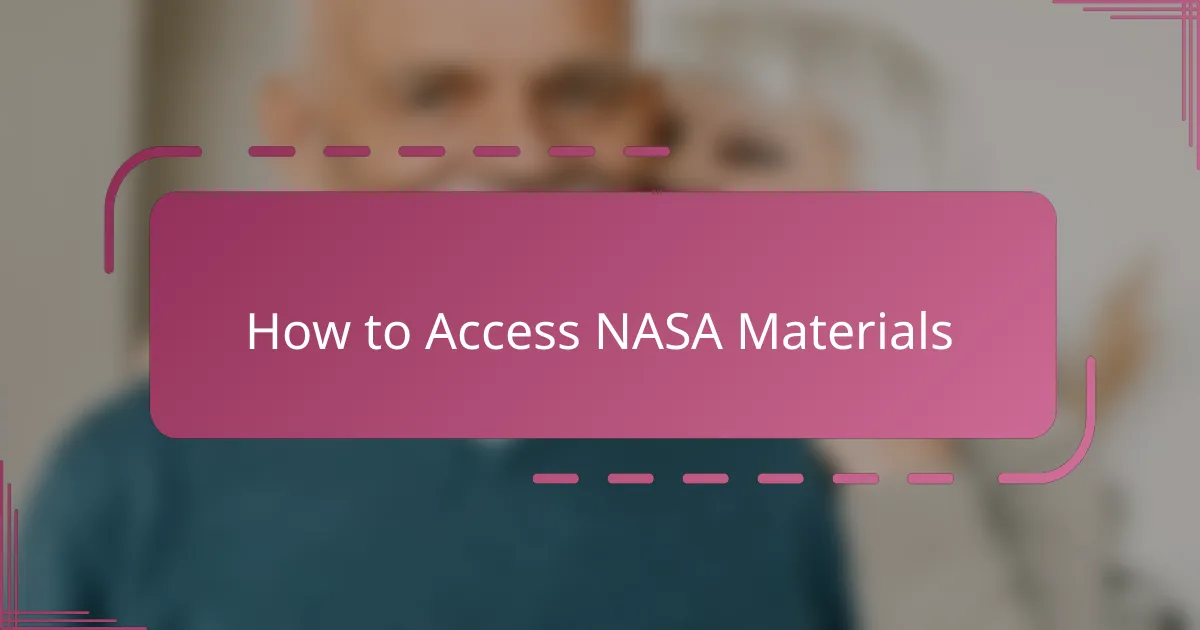
How to Access NASA Materials
Accessing NASA’s materials is easier than you might think. I just go straight to their official education website, where everything is neatly organized by grade and topic. It saved me from endless scrolling and made finding the perfect activity for my kids a breeze.
One thing I love is that these resources are completely free and available anytime. I remember pulling up a lesson plan on space exploration right before a family weekend, turning a casual day into an exciting learning moment without any cost or complicated signup process. Have you tried searching for quality, budget-friendly educational content? NASA makes it simple.
If you’re wondering how to navigate it, don’t stress—NASA offers user-friendly filters and clear categories. From printable worksheets to interactive simulations, everything is just a few clicks away. It made me realize that even busy parents like me can easily integrate top-notch STEM learning into everyday life. Wouldn’t it be great to tap into that treasure without fuss?
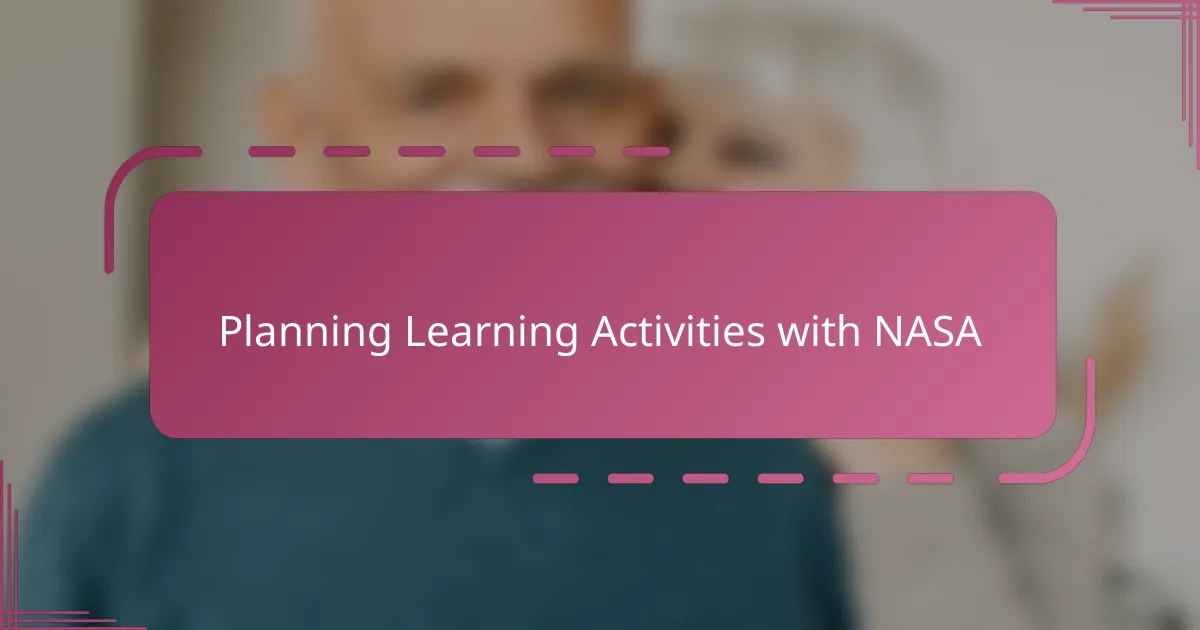
Planning Learning Activities with NASA
When I plan learning activities with NASA’s resources, I start by matching the topics to my kids’ current interests, whether it’s planets, rockets, or the International Space Station. Have you ever noticed how a tailored activity keeps kids more engaged? NASA’s age-specific guides make this so straightforward, helping me avoid activities that might feel too easy or too advanced.
I like to set small goals for each session, like building a model or completing an experiment, which turns learning into a fun challenge rather than a lesson. Watching my children’s faces light up when they succeed reminds me why thoughtful planning matters so much. Don’t you think those moments turn lessons into lasting memories?
Sometimes, I mix in NASA’s multimedia materials, like videos and interactive games, right alongside hands-on projects. This variety keeps my kids curious and eager to explore further without ever feeling bored. Have you tried blending different types of learning? It’s amazing how much deeper their understanding grows when activities are well planned and varied.
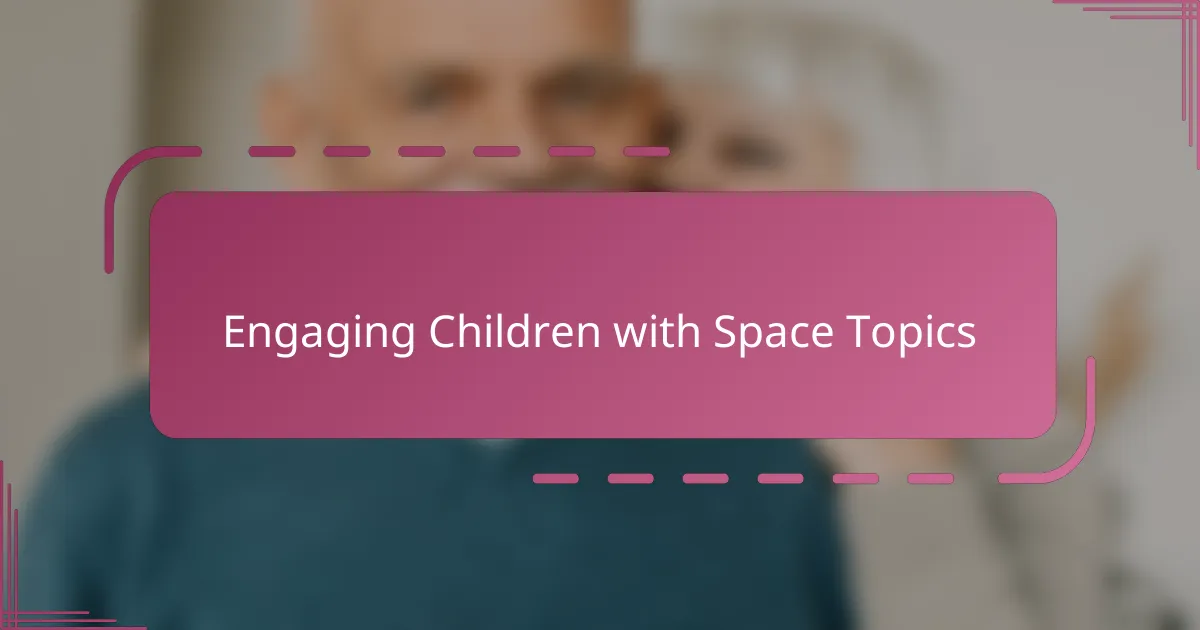
Engaging Children with Space Topics
One thing I love about engaging my kids with space topics is how naturally their curiosity blooms. When we watch NASA videos together or explore simple facts about planets, their questions just keep coming—and that’s where the real learning begins. Have you ever noticed how a single “why” from a child can lead to hours of exciting discovery?
I remember a time when my daughter built a mini solar system model using NASA’s printable guides. Seeing her carefully place each planet while talking about orbits made me realize how hands-on activities transform abstract ideas into something tangible. Doesn’t that hands-on excitement make space feel less distant and more like a personal adventure?
Sometimes, I surprise my kids with space-themed challenges, like spotting constellations or timing how fast a paper rocket flies. These little experiments keep the energy high and make learning playful. Have you tried turning lessons into games? It’s amazing how enthusiasm grows when children feel like explorers rather than students.
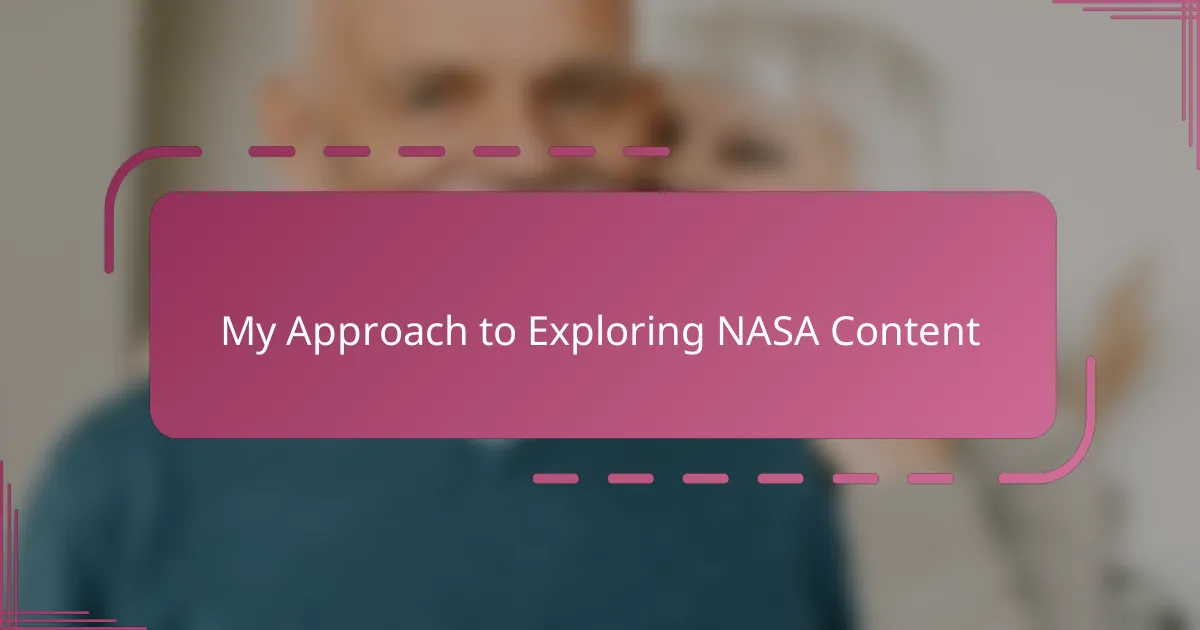
My Approach to Exploring NASA Content
When I explore NASA content, I usually start by browsing the themes that catch my children’s eyes. It’s become a fun ritual—watching their faces light up as we pick a topic together, whether it’s black holes or Mars missions. Have you ever noticed how shared excitement makes learning feel like an adventure instead of a task?
I also make it a point to take my time with the materials, diving into the interactive parts and sometimes getting my hands involved too. For instance, building a small model rocket alongside my child wasn’t just about the end result; it was about sharing curiosity and wonder in real time. Don’t you think those moments deepen the connection between parent, child, and the subject?
Lastly, pacing is key in my approach. I avoid rushing through activities and instead create a space where questions flow freely, and ideas spark naturally. I find that when kids aren’t pressured, they explore more creatively—and their enthusiasm stays alive longer. Have you experienced that shift from hurried teaching to relaxed discovery? It makes all the difference.
